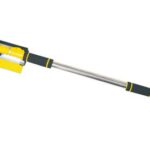Understanding volume is crucial for various tasks, from choosing the right storage container to estimating material quantities. While cubic feet is a common unit for measuring volume, understanding smaller units like 1/2 Cubic Foot is equally important. This article breaks down what 1/2 cubic foot means, how to calculate it, and provides real-world examples of its application.
What is 1/2 Cubic Foot?
A cubic foot represents the volume of a cube with sides measuring one foot each. 1/2 cubic foot, therefore, represents half of that volume. Imagine a cube with one-foot sides cut in half perfectly; each resulting piece represents 1/2 a cubic foot. This measurement is useful for smaller items and spaces where a full cubic foot might be too large a unit.
Calculating 1/2 Cubic Foot
Calculating a volume of 1/2 cubic foot involves determining the dimensions of a space or object and then using the formula:
Volume (cu ft) = Length (ft) x Width (ft) x Height (ft)
To find a volume of exactly 1/2 cubic foot, you need dimensions that, when multiplied, equal 0.5. Here are a few examples:
- 1 ft x 1 ft x 0.5 ft A box one foot long, one foot wide, and half a foot high.
- 0.5 ft x 0.5 ft x 2 ft A taller, narrower box, half a foot long and wide, but two feet high.
Remember, you can use any combination of length, width, and height as long as the product is 0.5 cubic feet.
Converting to other units
Sometimes dimensions are given in inches, not feet. To calculate cubic feet from inches:
- Calculate volume in cubic inches: Multiply length, width, and height in inches.
- Convert to cubic feet: Divide the result by 1728 (since there are 1728 cubic inches in a cubic foot). To find 1/2 a cubic foot, your final result should be 0.5.
Real-World Examples of 1/2 Cubic Foot
Understanding 1/2 cubic foot is practical in various scenarios:
-
Shipping: When shipping smaller packages, knowing if the volume is close to 1/2 cubic foot can help determine shipping costs. Many carriers have specific pricing tiers based on volume.
-
Gardening: When buying soil or mulch, bags are often sold in volumes like 0.5 cubic feet. Knowing this volume helps estimate how much material you need for your garden.
-
Storage: Choosing the right size storage container for smaller items requires understanding volume. A 1/2 cubic foot container might be ideal for storing seasonal clothes or small tools.
-
Concrete Calculations: When working with smaller concrete projects, you might need to calculate the amount of concrete required in fractions of a cubic foot. Half a cubic foot can be a common quantity for smaller jobs like patching or setting fence posts.
Conclusion
Understanding 1/2 cubic foot, how to calculate it, and its real-world applications is essential for various tasks. Whether you’re dealing with shipping, gardening, storage, or construction projects, a firm grasp of this measurement empowers you to make informed decisions. Remember to always double-check your calculations and consider using online cubic foot calculators for more complex shapes.

